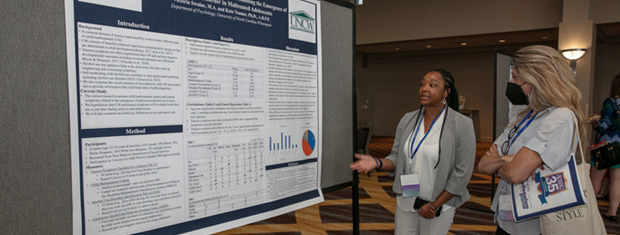




The APSAC Advisor is a peer reviewed quarterly news journal for professionals in the field of child abuse and neglect.
The APSAC Advisor provides succinct, data-based, practice-oriented articles that keep interdisciplinary professionals
informed of the latest developments in policy and practice the field of child maltreatment. It is designed to highlight
best practices in the field and publish original articles and current information about child maltreatment for professionals
from a variety of backgrounds including medicine, law, law enforcement, social work, child protective services, psychology,
public health and prevention in the U.S.
 If you wish to learn more about submitting an article to the Advisor, please click here.
If you wish to learn more about submitting an article to the Advisor, please click here.
This library contains Advisor issues dating back to the first issue in 1988. The most recent issue appears at the top.
Scroll down to select past issues by year and issue number. Once a publication appears in the box, you
can use the Enlarge button to open the document in a new window or tab (depending on how your browser is set up).
This will allow you to view the document with larger print.
To print a document, first use the Enlarge button to open the document in a new window or tab. Then use your browser's Print command.
To return here from a new tab, close the tab. To return from a new window, click your browser's Back button.
In the listing below, click on a year and issue number to see the articles in that publication.
2000-2001 Number 2
The medical director sits down at the computer and checks e-mail. About an hour's worth of discussion on the list serve alone. It seems the topic is about getting more time in the medical student curriculum. Maybe later today. He logs into his center's network software - looks like a peer review session in about an hour. Better check yesterday's medical exams.
How to Design a Telemedicine System That Actually Protects Children
New technology allows us to provide a myriad of services at a great distance This is a far cry from the days when the distance of the examiner from a patient was limited by the length of stethoscope tubing.
Telemedicine & Distance Learning in the Child Abuse Intervention Field
Probably the most widely used distance learning technology is the rapidly evolving field of video conferencing. Once limited to hard-wire or satellite connections, which are very expensive, new Internet technologies can bring reasonably good connections between two or more sites without a great deal of expense or difficulties.
Reflections on Creating Fiscal Solvency & Program Permanency
The opportunity to care for maltreated children and their families is one that few clinicians elect to pursue for a variety of reasons. How do we balance our desire to provide clinical services yet justify inadequate reimbursement to ourselves or our respective practices or institutions?
Colposcopy in the 21st Century
The use of photocolposcopy is a recent development in the field of child sexual abuse. Research articles and references to photodocumentation with colposcopes in the evaluation of child sexual abuse first appeared in the 1980s (Teixeira, 1981; Woodling, 1986; Heger, 2000).
Computer Graphics in Child Abuse and Neglect
Telling others about an abused child is an essential step in obtaining justice, attempting prevention, and teaching awareness. Teaching graphics packages are intended to present general concepts to jurors without dealing with specifics of a given case.
Photodocumentation of the Retina in Shaken Baby Syndrome
Even under the best circumstances, photodocumentation of the pediatric retina can be quite challenging. Yet when attainable, these photographs can be invaluable for the consultative and investigative process in cases of suspected child abuse.
Synchronous Evaluations of Child Abuse
We have been providing synchronous (real-time) evaluations of allegations of abuse from distant sites for the past three years as part of the Child Protection Team Program of the State of Florida, Department of Health, Children's Medical Services Telnet Initiative.
Image Advances in the Care of Abused Children: Techniques, Timelines & Expertise
Child abuse investigation done correctly is one of the best examples of a helping, caring team; accurate, timely, and technologically excellent data help any team optimize performance. Recent advances in the imaging diagnosis of physical injury associated with child abuse include 1) enhanced imaging techniques affording improved ability to make the diagnosis, and 2) improvements in information dissemination that allow the most expert person to view the images and communicate findings to the other members of the team so that effective child protection and injury investigation are completed in a timely fashion.
The purpose of Journal Highlights is to alert readers to current literature on child abuse. Selected articles from journals representing the variety of disciplines reflected in APSAC s membership are presented in the form of an annotated bibliography.
APSAC Advisor 13(2): Full Issue